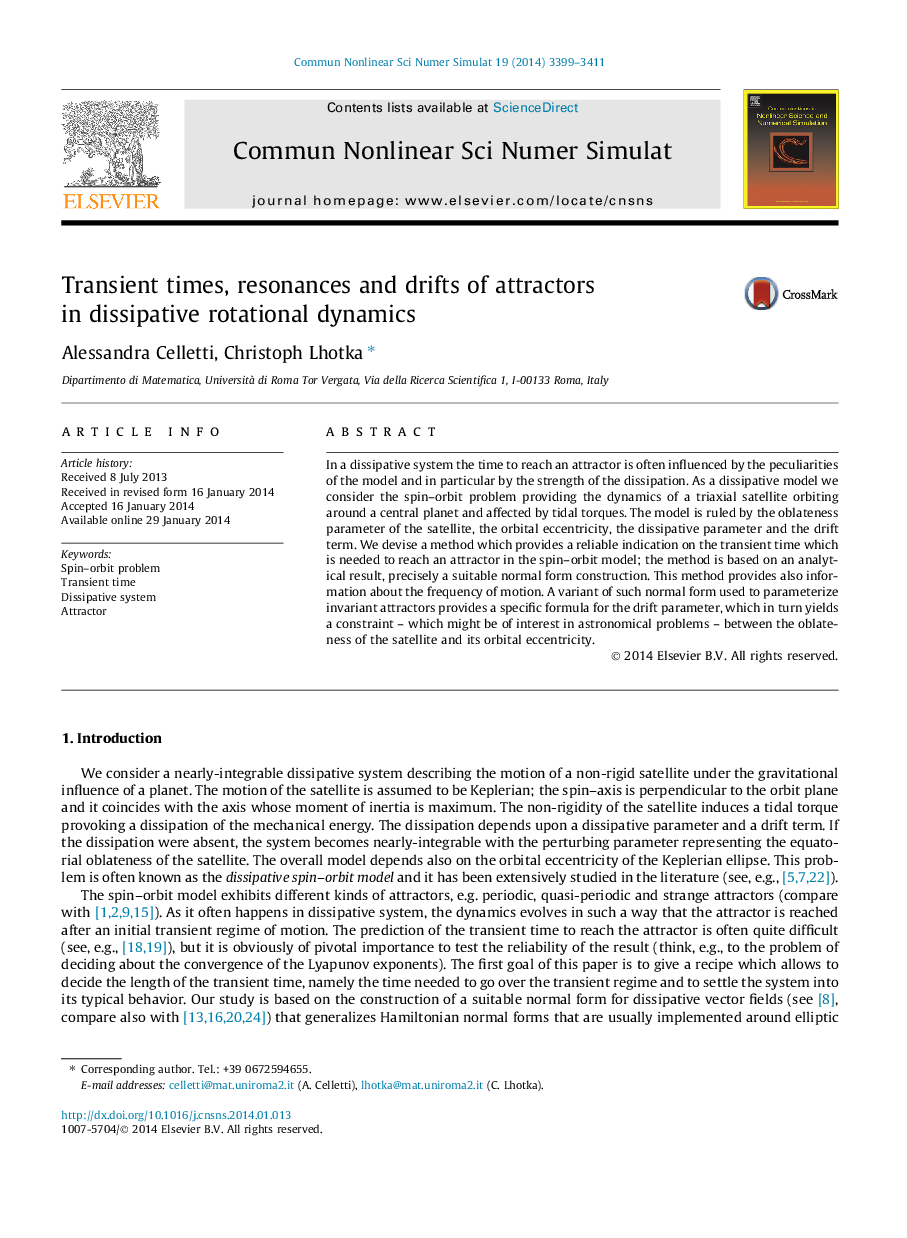| Article ID | Journal | Published Year | Pages | File Type |
|---|---|---|---|---|
| 759050 | Communications in Nonlinear Science and Numerical Simulation | 2014 | 13 Pages |
•We devise a numerical method to evaluate the transient time to reach attractors in dissipative systems.•We implement a suitable normal form for dissipative dynamical systems that are close to integrable to the case of the spin–orbit problem.•We develop the parametrization of KAM tori in the dissipative spin–orbit problem in Celestial Mechanics.•We derive a simple relationship between the eccentricity and shape parameters in the spin–orbit problem.
In a dissipative system the time to reach an attractor is often influenced by the peculiarities of the model and in particular by the strength of the dissipation. As a dissipative model we consider the spin–orbit problem providing the dynamics of a triaxial satellite orbiting around a central planet and affected by tidal torques. The model is ruled by the oblateness parameter of the satellite, the orbital eccentricity, the dissipative parameter and the drift term. We devise a method which provides a reliable indication on the transient time which is needed to reach an attractor in the spin–orbit model; the method is based on an analytical result, precisely a suitable normal form construction. This method provides also information about the frequency of motion. A variant of such normal form used to parameterize invariant attractors provides a specific formula for the drift parameter, which in turn yields a constraint – which might be of interest in astronomical problems – between the oblateness of the satellite and its orbital eccentricity.
